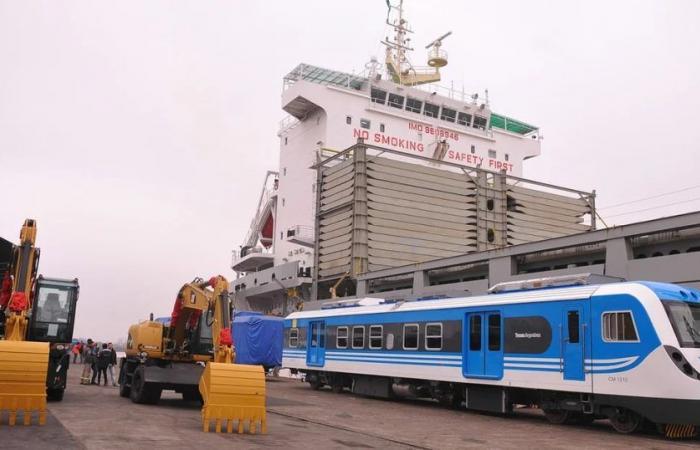
Although he recently praised the economic course adopted by the government of Javier Milei, The World Bank deepened its negative forecast about the variation in GDP this year, which went from a fall of 2.8 to 3.5%, with a recovery of 5% next year, reports from the multilateral credit entity with headquarters in Washington highlighted the very poor performance of Argentina in recent decades.
For example, a study that also reported Infobae warned that it is the only leading country in agricultural matters whose exports decreased in the last decade at an average of 1.3% annually, losing share in the world market.
Even more forceful are some of the conclusions of the study “Argentine Republic, Economic Memorandum of the Country” in which, although the entity foresees “a new economic horizon of growth”, it also accounts for the abysmal Argentine performance since the mid-20th century. accentuated from the seventies onwards.
The report, presented during the week at the Córdoba Stock Exchange by Daniel Reyessenior economist of the organization for Argentina, highlights from a survey of the economic activity of 130 countries between 1950 and 2022, the one that spent the longest time in recession: no less than 33% of the time, that is, one in three years, surpassing in this negative mark countries with also very poor performance such as Chad, in Africa, and Venezuela, in Latin America.
Reyes and the Argentine economist Julian Folgar, in another presentation in Buenos Aires, stated that the average duration of economic recessions in Argentina was 1.6 years (that is, about twenty months) with an average annual drop in GDP close to 4% in each case. Periods of crisis also coincide with the presence and accumulation of macroeconomic imbalances.
In fact, they stressed, the main reason for Argentina’s poor economic results is the sustained presence of high levels of volatility.”
This volatility, in turn, is related to the extreme procyclicality of economic policies, which tended to over-expand public spending in good times and were forced to over-adjust in lean times. This volatility is reflected not only in the fact that Argentina leads due to the pendulum of its policies and its results in terms of economic activity: a graph on the evolution of its GDP variations over the years looks quite similar to a roller coaster.
One channel of the negative impact of volatility is investment, which makes future demand more uncertain and inhibits decisions that are projected over the medium and long term, Reyes and Folgar explained.
This same phenomenon caused the number of companies in general, and exporting companies in particular, to systematically decline in this century, with which the country inexorably lost share in the world market. In this regard, a graph from the study shows that while in 2002 there were about 120 new companies per million inhabitants, in 2015, after the first wave of the Kirchnerist experience, that ratio fell to less than 40 companies. Meanwhile, while between 1994 and 2006 the number of exporting companies increased, with ups and downs, to around 15,000 that last year, since then the number fell sharply, to around 9,000 in 2020. Furthermore, while between 1995 and 2007 the number of companies Those who joined the ranks of those who exported surpassed those who stopped doing so, since then the opposite has happened.
“Argentina – says the Memorandum – has several trade frictions that create an anti-export bias.” Distance to markets and other geographic conditions, he acknowledges, can result in high transportation costs, “but poor trade outcomes go beyond these factors: their lack of trade facilitation measures affects time, costs and predictability.” of commercial operations at the border, which further decreases national competitiveness.” In addition, the study mentions other trade policy measures that make integration into global markets even more difficult, “including tariff and non-tariff measures that distort relative prices at home versus abroad.” Argentine tariff barriers, he says, “are more than double that of other economies in the region, such as those of the Pacific Alliance.”
The World Bank’s “Memorandum” on Argentina also highlights the deterioration of the country’s “hardware.” “The deterioration of port infrastructure and logistics connectivity generates inefficiencies. Argentina’s ranking in the World Bank’s international logistics index dropped from 45 in 2007 to 73 in 2023 (among a total of 139 countries). Investments are needed to improve river infrastructure and operating conditions. Rail is another priority area, as it is vital for the transport of bulk goods with low marginal value by weight, such as soybeans. A complete overhaul of Argentine railways would require significant financial resources and may not be feasible in the short term. The expansion of digital networks along corridors and rural areas would increase export opportunities and favor competitiveness,” says a passage in this regard.
In fact, since 2007, the World Bank has been developing a “Logistics Performance Indicator” based on a global survey of logistics professionals about how easy or difficult it is to operate in a country, evaluating six dimensions:
- Efficiency of customs procedures and border management;
- Quality of infrastructure relating to trade and transport;
- Ease of organizing international shipments at competitive prices;
- Competition and quality of logistics services;
- Ability to track and trace shipments; and
- Frequency with which shipments reach recipients within the expected or scheduled delivery time.
The most recent World Bank report on logistics performance, which includes a variety of sources, from logistics operators and experts, cargo companies, customs and national and global agencies, to the International Postal Union, once again assigns Argentina a performance abysmal. “The main decrease – he explains – has occurred in customs procedures.” In addition, he continues, there was deterioration of public physical infrastructure “including that related to export, such as ports, roads, river dredging and railways” where investment “has been limited.”
“Trains are slow and unreliable, and are only used to transport bulk goods. Ports are expensive and roads require investment for maintenance and improvement. Digital connectivity is also lagging behind that of neighboring countries. Improving the efficiency of public investment could be achieved through public investment management that focuses especially on the strategic planning of resource allocation and that frames decisions in a medium-term perspective,” says another section of the last logistics performance report (in English, Logistics Performance Index, LPI).
As a summary of the country’s lag in its infrastructure and its functionality, one of the subindexes of the Logistics Performance Indicator is how long it takes for mail, parcels and shipments in general from abroad to reach their final destination. For Argentina the median is 27 days, which means that half of the shipments take more than that time and half take a little less, although not much, the average of the most frequent results is 21 days.
Of the 139 countries included in the World Bank’s 2023 Logistics Performance report, four countries show a worse result than Argentina in this area: the so-called “Democratic Republic” of the Congo, where the median time is 61 days, Venezuela ( 38), Guatemala (29) and Paraguay (28).
One might think that Argentina’s geographical eccentricity is part of the explanation, but it is more about internal delays. For example, the median in days to arrive at the final destination of shipments from abroad in Chile is 10 days and that of Uruguay is 9 days. In developed countries it ranges between 2 or 3 (as in the case of Sweden) and 5 days (USA).
An analysis by the Chilean Maritime and Port Chamber (Camport) shows that out of 10 Latin American countries, Argentina is not only the one with the worst position in the logistics performance ranking, but also one of the three (along with Colombia and Mexico). that lost positions in the ranking, as well as score in the performance indicator.
Cardboard full for so much decadence.





